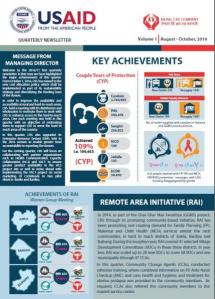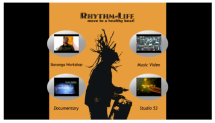CRS Newsletter
The Nepal Contraceptive Retail Sales (CRS) Project was established in July 1976. Its status was formally acknowledged by the Ministry of Finance in 1978. Financial support was provided by USAID through Westinghouse Electric Inc, USA.
The social marketing of Dhaal, Nepal’s first male contraceptive, was inaugurated by Princess Prekshya in May 1978. These condoms were sold through 55 outlets in Kathmandu and generated significant sales from the outset. The project introduced Nepal’s first condom vending machine in Kathmandu in 1980. In January 1983, on the recommendation of the National Commission on Population, CRS was institutionalized as a not-for-profit company, with the Ministry of Health as implementing agency. The CRS/MCH project was converted into a private “social marketing” autonomous company registered under the Company Act 2053 BS, and in 1984 onwards was represented by a bold logo – a boy and a girl nurtured within the protective hands of their parents.
Today, CRS is managed by local Nepalese staff and governed by an independent Board of Directors. It is the only social marketing company working as a not-for-profit organization in Nepal. These are examples of both the quarterly and annual newsletters produced by CRS.
Source: Nepal CRS Company
Date of Publication: March 25, 2019
SIMILIAR RESOURCES
Tools
Examples
- Family Planning Counselling Kit
- Men's Reproductive Health Curriculum
- Training Resource for Male Condoms
- Comprehensive Condom Programming A guide for resource mobilization and country programming
- No-Scalpel Vasectomy Curriculum
- Voluntary Medical Male Circumcision In-Service Communication Best Practices Guide
- How to Create Successful Vasectomy Programs
- Quick Guide to Vasectomy Counseling
- Suaahara Training Guidelines and Participant Handbooks
- Integrating Human-Centered Design in a Multidisciplinary Effort to Address Provider Bias: The Beyond Bias Experience



